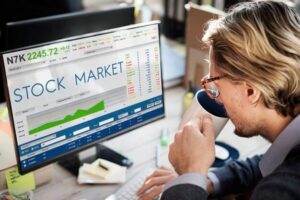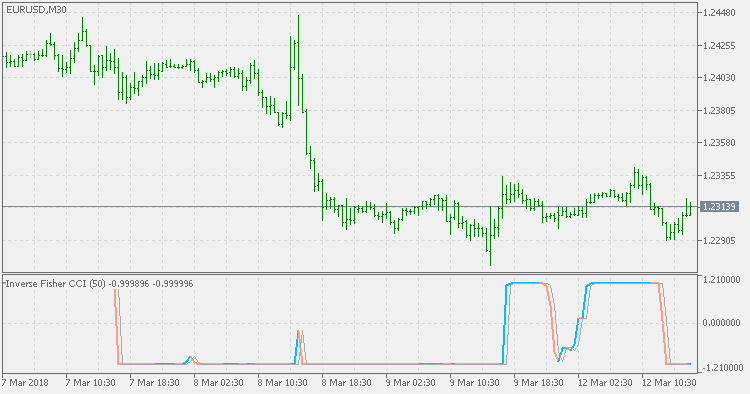17 Aug things are include in scope of microeconomics: Scope Of Economics: Micro, Macro, International, Finance
Содержание

Thus, the focus of microeconomics is mainly confined to price theory and resource allocation. Theory of growth, theory of business cycles, monetary and fiscal policies etc. are beyond the limits of microeconomics. The topics covered in microeconomics refer to the interaction of households and businesses. The main topics are supply and demand, equilibrium, competition, profit maximization, and opportunity cost. Land, labour, capital and entrepreneur, all factors contribute in production process. So they get rewards in the form of rent, wages, interest and profit respectively.
(Otherwise they will have to wait in queue.) https://1investing.in/ economics is both positive and normative science. Micro-economics is applied to analyses problems faced b business executives. The price theory in the service of business executives is known as managerial economics. It contributes improved decision-making in the area of demand analysis, optimal production decision, pricing decisions to maximize profit. It guides businessmen to determine the price of different goods and factors of production. Similarly, the theory of costs consists of the different concepts of cost, nature of short-run and long-run costs etc.
Specialization Definition – Investopedia
Specialization Definition.
Posted: Sun, 26 Mar 2017 05:11:35 GMT [source]
Microeconomics is the study of individual units of the economy, such as individual consumers, individual firms, and small groups of individual units like various industries and markets. In micro economics, the behaviour of individual consumers and producers in detail is analysed. Microeconomics is not only concerned with analyzing economic condition but also with the maximization of social welfare. It studies how given resources are utilized to gain maximum benefit under various market conditions like monopoly, oligopoly, etc.
Difference Between Microeconomics and Macroeconomics
It exerts influence on both individuals as well as the government’s economic frameworks. So now, we understand that macroeconomics is a specialized field of Economics. It focuses on the economy through the aggregate of the individual units to determine a large impact on the complete nation.

There are different traditional and modern theories regarding the determination of the rewards of factors of production. The Macroeconomic theories involve economic growth and development, national income, money, international trade, employment, and general price level. In contrast, macroeconomic policies cover fiscal and monetary policies.
MANAGEMENT
The size of an individual unit is so small that any change arises due to it having no effect on the whole economy. The change in the equilibrium from E to E1 is not a sudden change. But the process of change has been caused by several variables.
The theory of product pricing is also called the theory of the firm. The subject matter of the theory of product pricing is the theory of demand and the theory of production and cost. Micro-economics helps government to formulate different economic policies for the welfare of the people. It gives tools and foundations for analysis of economic policy. The public policy relates to tax, loans, subsidy, price etc. The price theory provides analytical tools for economic policies affecting price and production.
This branch of Economics deals with the economy as a whole or totality, including the Macro factors. The scope of macroeconomics does not involve studying the individual units of an economy. But the economy studies the total and average of the entire economy. The major factors include national income, total employment, total savings and investments, aggregate demand and supply, and the general price level. Microeconomics is also called price theory as it studies the pricing of goods and services and the factors of production. The basic elements of microeconomics are goods and services, prices, markets, and economic agents like consumers, firms, and government.
Theory of Distribution
Due to the assumption of ceteris paribus, microeconomics is a partial equilibrium analysis. Thus, it doesn’t clarify the interrelationship between several segments and the monetary factors of an economy entirely. Microeconomics assumes the total quantity of resources is given and it seeks to explain how they are allocated to the production of various goods. Therefore, microeconomics studies the allocation of resources and determines what to produce, how to produce, and for whom to produce. Microeconomics thus deals with a small part of the national economy.
- They can be cured by taking monetary and fiscal policies and direct economic control measures.
- Microeconomic theory shows under what conditions these efficiencies are achieved.
- For instance, the law of demand expresses that there is an opposite connection among price and amount demand of an item when different components influencing the demand are thought to be steady.
- Many times surpluses and shortages exist for products that cause prices to go up and down.
- Consumption theory will also discuss the occurrence of the market demand curve which is assessed as a derivative of the individual customer demand curve.
Because of this explanation, microeconomics has constrained applications where the majority of our financial exercises are guided and directed by the administration. He profitable assets are rare in the economy and microeconomics tells how gainful assets are designated in the creation of different products and enterprises. It likewise assists with discovering, what to create, the amount to deliver, and for whom to deliver. Its destinations are to lay down the procedure by which rare/limited resources or factors of production are dispensed among proficient employments. Microeconomics is the study of one particular unit rather than all the units combined. Economic theories and concepts are used to analyse the growth and development of low-income countries.
Know Economics and Law
The various tools used in microeconomics like cost and price determination, at an individual level becomes the foundation of managerial economics. Microeconomics helps in analyzing market mechanisms i.e. determinants of demand and supply which are responsible for the determining prices of commodities in the market. Along with this, it provides an insight on theories relating to prices of a factor of rent, wage, interest, and profit. Microeconomic theories explain various conditions of cost like fixed cost, variable cost, average cost, and marginal cost. This analysis is then carried out on all matters relating to the cost of producing goods and services on the market.

The higher the prices higher the intensity to purchase these goods. It is named after the Scottish statistician, Sir Robert Giffen. When demand exceeds supply over a period, suppliers either increase the supply or increase the prices. As prices go up, demand would ideally reduce since the number of people who can afford goes down. This way, suppliers buy time to get back in action coping with the demand. Marginal Utility TheoryA customer’s marginal utility is the satisfaction or benefit derived from one additional unit of product consumed.
Microeconomics is a branch of economics that studies the behavior of individuals and businesses and how decisions are made based on the allocation of limited resources. Simply put, it is the study of how we make decisions because we know we don’t have all the money and time in the world to purchase and do everything. Microeconomics examines how these decisions and behaviors affect the supply and demand for goods and services, which determine the prices we pay. These prices, in turn, determine the quantity of goods supplied by businesses and the quantity of goods demanded by consumers. Microeconomics studies the determination of prices of goods and services therefore it is known as price theory. Microeconomics studies product pricing in different market situations like perfect competition, monopoly, monopolistic competition, oligopoly, etc.
Online shopping is on the rise as it is convenient for buyers. As a result, the offline clothes market has experienced a gradual downfall. This shows that the change in consumer behavior impacted the demand for clothes in the brick-and-mortar market. Economic FactorsEconomic factors are external, environmental factors that influence business performance, such as interest rates, inflation, unemployment, and economic growth, among others. SubsidiesA subsidy in economics refers to direct or indirect financial assistance from the government to an individual, household, business, or institution to promote social and economic policies.

Microeconomics gives information concerning how the cost of items is resolved or determined. The production and pricing choices are taken dependent on the principle of interest/demand, the elasticity of demand, consumer behavior, and so on. The goods are produced with the joint efforts of factors of production. The reward is to be given to the owners of the factors of production in the form of wages and salaries, rent, interest, profit, etc.
Micro-economics tells how the productive resources are allocated in the production of numerous goods and services. Informs – which goods to be produced, how much to produce and why to produce. Likewise, it informs how to distribute the produced goods and services among people for consumption.
The fundamental presumption of microeconomics is a full-employment equilibrium. In any case, it is unreasonable which can be advocated through the announcement of J. M. Keynes-to expect full employment is to accept our troubles away.
things are include in scope of microeconomics is a key area of economics that studies the behavior of individuals and businesses and how decisions are made based on the allocation of limited resources, such as time and money. Common topics are supply and demand, elasticity, opportunity cost, market equilibrium, forms of competition, and profit maximization. Microeconomics should not be confused with macroeconomics, which is the study of economy-wide things such as growth, inflation, and unemployment. The theory of economic welfare is also known as welfare economics. Welfare economics is an important branch of micro- economics. The subject matter of welfare economics includes the potential measures of maintaining economic prosperity of men as consumers and producers and to improve that prosperity or welfare.

